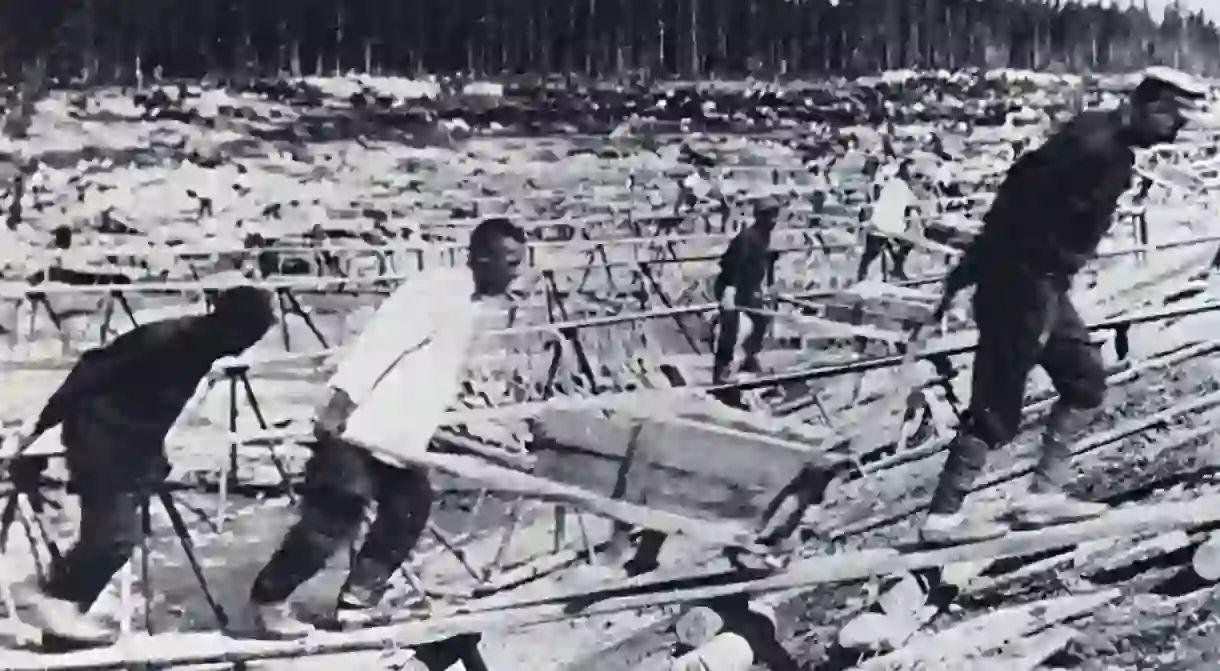A Brief History of Gulags in Hungary

Soviet occupation of Hungary during WWII officially took place between 1944 – 1945. During this time, deportations to forced labor camps began. Little was known about these camps, nor how many fell victim to the round-up of civilians, prisoners of war and political dissidents which would form their populations, until after Communism fell in 1989. We take a look at the history of Gulags in Hungary.
The Gulag and the GUPVI: What’s the Difference?
Originally, the term Gulag was coined in reference to the government agency which, during Stalin’s time in power, oversaw a system of forced labor camps; first throughout Russia and later throughout the USSR. However, the term quickly became used to refer to the forced labor camps themselves, in which hundreds of thousands were imprisoned under Communist rule.
While all Soviet forced labor camps are often referred to as Gulags, in fact two different types of camp existed: the GUPVI and the Gulag. While conditions in both were largely the same, the primary difference was that no convicted criminals would be found in the GUPVI.

Gulags in Hungary
By 1944, the tide of the Second World War had begun to turn on the Germans. Nazi forces had invaded Hungary in March that year and by September the Soviet army had entered the country, rapidly occupying almost everywhere but Budapest. By May 1945 the war was over, however the Soviet presence in Hungary continued.
Almost immediately after the Soviet army crossed the border into Hungary, a process now referred to as “málenkij robot” (little work) began. An initial wave of deportations was set in motion, in which thousands of people were rounded up and sent to forced labor camps, often to undertake menial yet back-breaking work. As the Soviet Army took Budapest, they also captured a number of prisoners of war (POWs), all of whom were sent to the gulags. However, rumour has it that Soviet military commander Marshal Rodion Malinovsky had promised a certain number of POW’s, which in fact did not exist, so he filled the quota with around 100,000 civilians.

A second wave of deportations took place in early 1945. This time, the process was better organised and focused on the deportation of ethnic Germans and POWs. However once again, thanks to unrealistic quotas, Hungarian civilians found themselves caught up in the process, which saw prisoners first moved to transit camps in Romania and Western Ukraine, before finally being moved to camps across the Soviet Union. As well as civilians and prisoners of war, those viewed as political dissidents were also gathered up and taken to the gulags.
In total, recent estimates suggest that around 600,000 Hungarians were transported to forced labor camps during the Soviet occupation. In 1946 negotiations to bring them home began. These were ultimately successful and by 1955, after the death of Joseph Stalin, the last prisoners were released from the camps and allowed to return to Hungary. The returned prisoners totalled an estimated 330,000 – 380,000. What happened to the remaining 200,000 isn’t known for sure however it is generally accepted that they perished in the camps, and today November 25 is a day of remembrance in Hungary, dedicated to those who fell victim to the forced labor camps of the Soviet Union.













